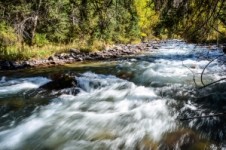The 2015 Nies Lecture: IP as Semicommons
 The title of the 2015 Nies Lecture, being given by Harvard Law Prof. Henry Smith on Thursday, April 16th, at 4:30pm (register here), is “Semicommons in Fluid Resources.” What’s a “semicommons,” and what does it have to do with intellectual property? (I should note that I haven’t talked to Prof. Smith about his lecture; Tuesday’s post and today’s are based just on the abstract read in light of Prof. Smith’s previous scholarship.)
The title of the 2015 Nies Lecture, being given by Harvard Law Prof. Henry Smith on Thursday, April 16th, at 4:30pm (register here), is “Semicommons in Fluid Resources.” What’s a “semicommons,” and what does it have to do with intellectual property? (I should note that I haven’t talked to Prof. Smith about his lecture; Tuesday’s post and today’s are based just on the abstract read in light of Prof. Smith’s previous scholarship.)
Before I go further, let me recap Tuesday’s post. Prof. Smith has, in a series of articles, laid out a theory of property law that takes into account the informational costs of assigning property rights in various ways. Some ways of describing who has a certain right, and monitoring whether that right is being respected, are very concise: “Kerry owns that red ball.” “Hey, that’s not your ball, it’s mine!” I called these object-based rules, but Prof. Smith calls them “exclusivity rules.” The idea is the same: saying Kerry has the exclusive right to use the red ball for any purpose is a short and easily comprehended way of assigning all uses of that particular object to Kerry. It’s easy to identify who Kerry is, what the object is, and what Kerry (or anyone else) can do with it.
But that’s not the only way to assign rights to objects. Instead of giving all uses of a particular object to one person in an undivided lump, we could instead specify various uses of the object under various conditions, and say that different people can engage in those uses. In other words, we could manage access to the ball.

 I’m very excited about this year’s Nies Lecture, which will be delivered by
I’m very excited about this year’s Nies Lecture, which will be delivered by